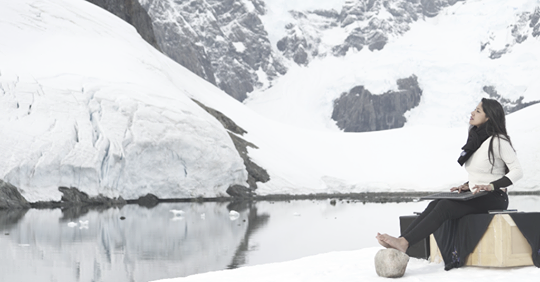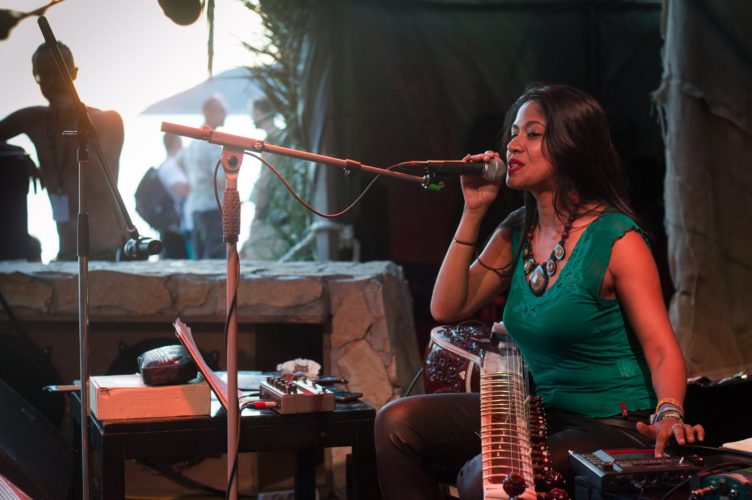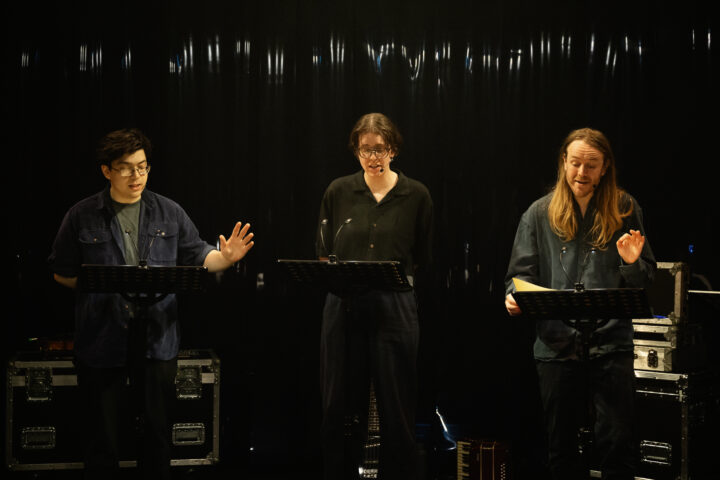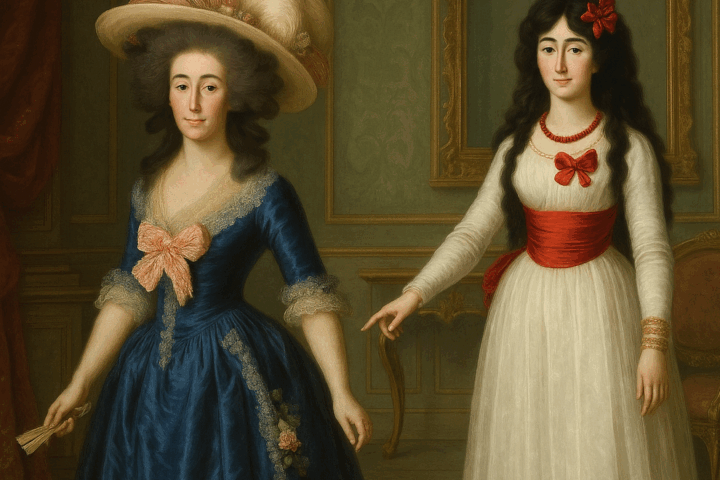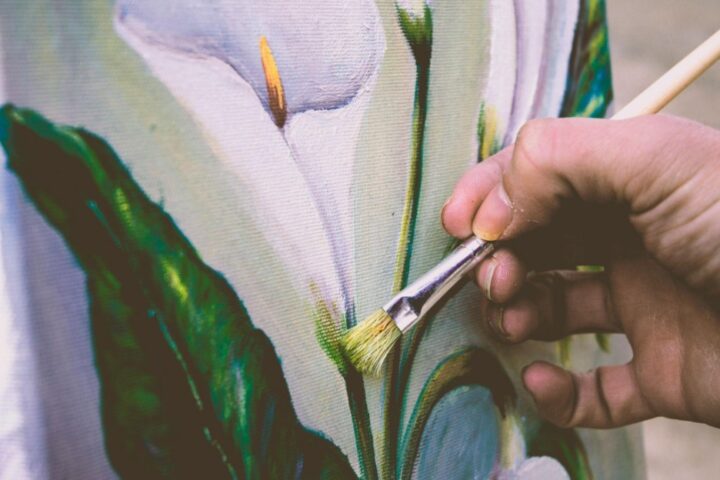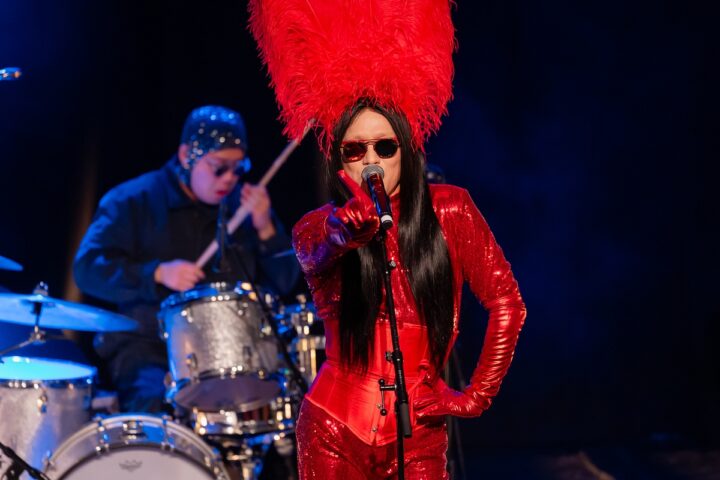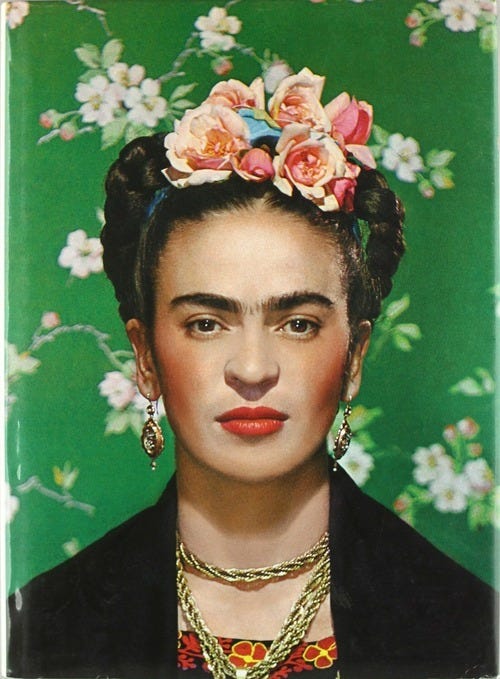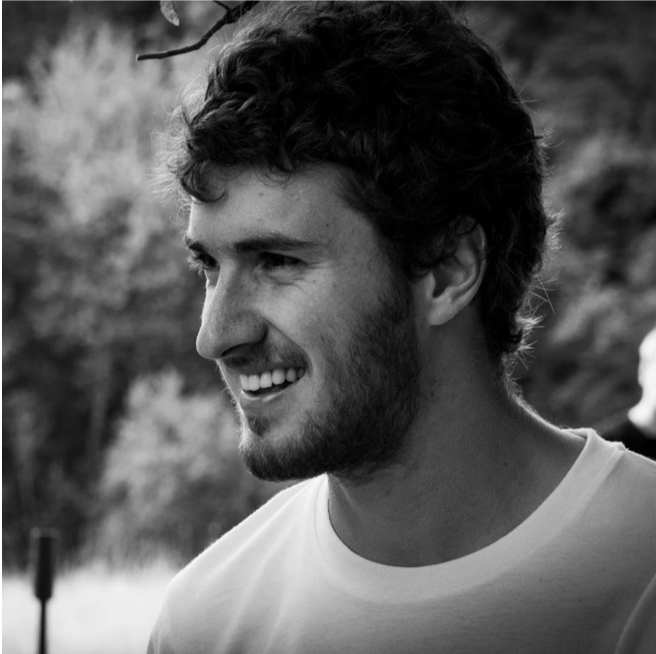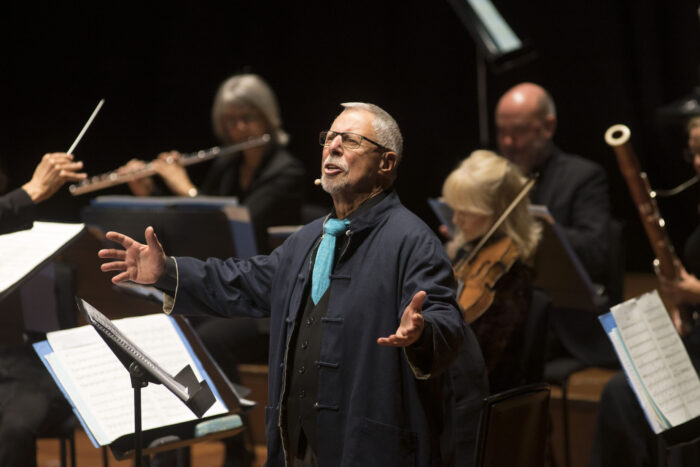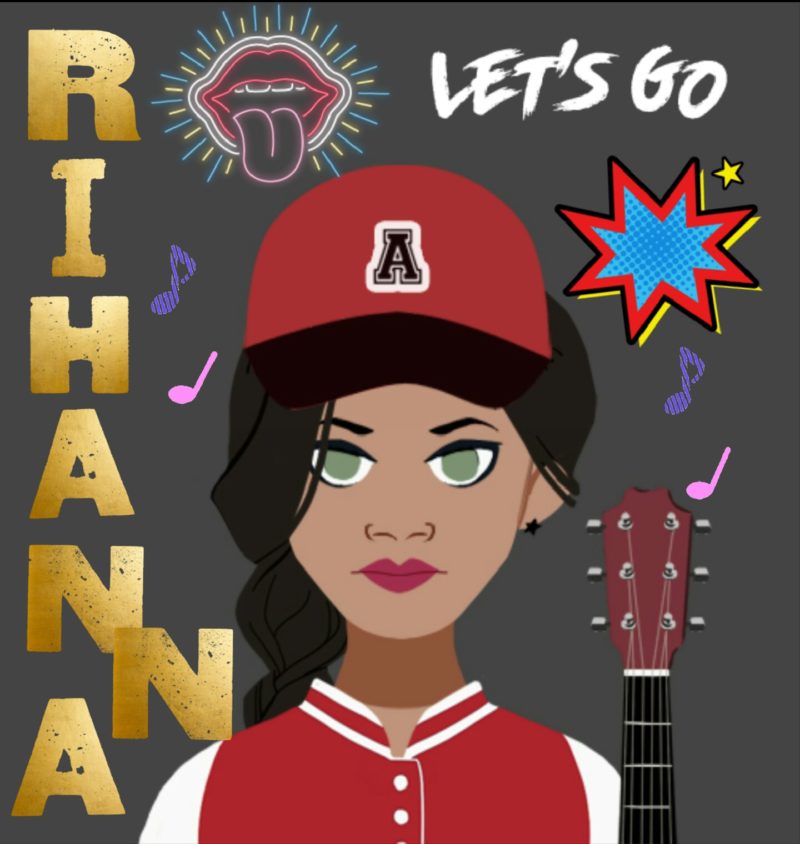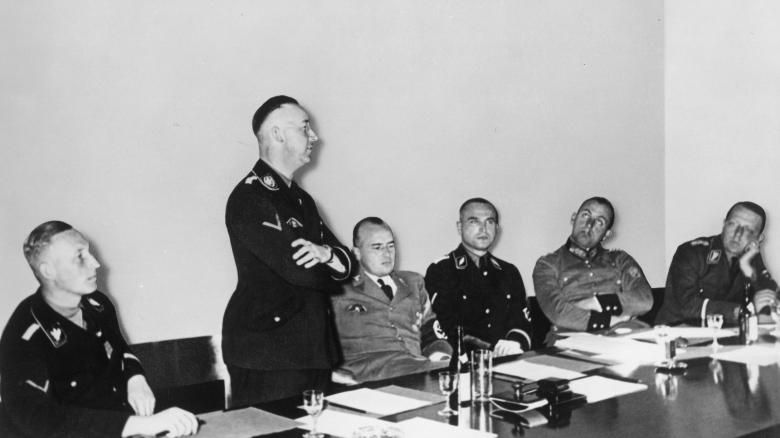Shama Rahman: fusing art and neuroscience
You just completed a PhD. What was your field of research?
I have an interdisciplinary PhD exploring signature brain patterns that underlie different types of creativity and stages of innovation. Bit of a mouthful, but the official title is the ‘Complex Neuroscientific Systems of Creative Cognition’, and it involves combining statistical physics, experimental psychology, design methodologies and creativity models, cognitive neuroscience, and a good dose of neurophilosophy! If you’re not up for reading a door-stopper of a PhD thesis and want to know a bit more, I’ve co-authored a book chapter ‘Multidisciplinary Contributions to the Science of Creative Thinking’. You can also watch my TedX talk on ‘Multidisciplinary Creativity’.
In the talk I outlined how I’ve taken this multidisciplinary research and approach forward as a practice by creating the award-winning creative production company Jugular Productions (tagline: ‘Joining The Head and The Heart’). As its Artistic Director, my vision is to showcase and develop rich interactions between cutting-edge science and creative performance, showing clearly that science, art, philosophy and entertainment are equally fundamental parts of culture, each most fruitfully pursued in dialogue with the others. Jugular produces cross-disciplinary salons, thought-provoking and entertaining performances, interactive installations, designs immersive experiences, and creative educational embodied workshops. Using all this experience, we offer cross-disciplinary consultation on events and marketing campaigns. Jugular has worked on diverse projects ranging from tech topics such as AI and the future of work, AR/VR/MR, and digital privacy, to social topics such as gender constructs, modern anthropology of love and sustainability trends. We’ve also had collaborations with companies such as Google on multidisciplinary education, Hyundai and Gensler on company organisation based on employee values, productivity and creativity, EU-funded initiative NERRI on neuroenhancement, Wellcome Collection’s interdisciplinary symposium on ‘Genes, Food and Technology’ and Wellcome Trust supported project 'Hack the Senses' on redesigning perception with sensory science. Jugular has presented work at a number of festivals notably London Design Festival, V&A's 'Future Starts Here', British Science Festival, Digital Shoreditch, Citadel, Secret Garden Party, Wilderness, Green Man.
I’m also directly building on my PhD research now, as I wanted to be able to have a positive social impact outside of academia. So I’m now the CEO of a startup called NeuroCreate, building personalised AI Collaborators to help you feel 'in the zone' more quickly. NeuroCreate helps accelerate you to reach Flow; a mental state where you feel capable of overcoming challenges effortlessly. Flow improves wellbeing, creative productivity, and mental flexibility, leading to a better experience at work.
You are also an artist, a singer? What do you do exactly?
I am indeed an artist - and I think this is what has given me the insight for the themes in my scientific and entrepreneurial work.
I’m an actor, composer, multi-instrumentalist and cross-cultural singer. Some of my music is conceptually inspired by my research. With my band, I play the Sitar out of the traditional context, composing and performing across genres including, jazz, live electronica, hip-hop, drum ’n’ bass, worldbeats, Indian/western classical melodies, folk storytelling and beat poetry.
I’ve performed around the world with my band and as a soloist, all the way from Korea to being the first Sitarist to perform in Antarctica.
I’m particularly passionate about my last album ‘Truth BeTold’, which was recorded with financial support from a successful Kickstarter campaign, an Emerging Excellence Award, and an artist residency with the Southbank. I was also one of the first artist-in-residence with the pioneering wearable tech, ‘mi.mu gloves’ - and ‘Truth BeTold’ is the world’s first full album to integrate this wearable tech, with improvising musicians. I produced and performed a beautiful multi-media show of the album at the Southbank with some incredible artists. This stunning performance broke through the boundaries of live performance and got featured on Channel 4's Sunday Brunch, and I also integrated the gloves into the show. The performance delivered something completely new, using the mi.mu gloves as a centrepiece, allowing for free form improvisation and direct interaction with dancers and visual artists to create a futuristic storytelling loop.
Have Ravi Shankar and Nishat Khan inspired your sitar playing?
Ravi Shankar, Nikhil Bannerjee and Vilayat Khan have all inspired me in my sitar playing. In fact, I have learned both the Vilayat Khan style and the ‘Maihar Gharana' style of playing of the first two maestros - Pt Ravi Shankar taught my teacher Sanjay Guha who was one of his last senior disciples.
I believe in serendipitous convergence. I started composing a song years before I started learning the sitar, which I felt drawn to complete, after I had begun learning - and realised that it had the same scale as a Raga called 'Nat Bhairavi ', created by Pt Ravi Shankar. This song became a predominantly sitar composition with a triphop and electronic aesthetic called Time, from my first album 'Fable:Time'
I have read that your album incorporates Sufism; is this your practice as well as artistic inspiration?
I would certainly say that I have been inspired by the Sufi ‘tareeqah’ ('way’). Philosophically, there is a search to metaphysically connect and find commonalities between different concepts, situations and states of being. If one could call this a practice then I am constantly doing this seeking. Sufism is associated to certain practices, which I have some experience of such as whirling or chanting that allow a surrender to such connectivity within an ecstatic state of mind, which in turn is begotten through repetition and a gradual increased emotional or movement intensity. Certainly the musical phrasing and story arcs within my art seek to evoke this.
Was your project to play music in Antarctica a compromise between your left and right brain?
I certainly wouldn't call it a compromise...rather a complementary integration. As I mentioned, I have an interdisciplinary practice and I brought my art science methodologies to the expedition. It was the first Antarctic Biennale, and apart from a sitar performance on ice being considered an art installation, there was an aim of bringing together 100 transdisciplinary artists and scientists. I chaired a panel discussion on board between these two parties, that discussed the validity of breaking down the barriers between the two disciplines of art and science to unify them, versus the merit of keeping them distinct so that each can have a precise role in what insights they offer within any art/science integration or collaboration.
For me, the experience of going to Antarctica was both the stuff of my dreams, fulfilling my wishes to be an explorer...and incredibly visceral, embodied, sensory...and ultimately deeply emotional. I hope to keep this lived experience close for the rest of my life. I also want to share this with others by creating a new electro-acoustic suite of music, "ReSound", to give Antarctica her voice anew. It has underwater sound recordings of whales and seals and the very ice of Antarctica popping and glaciers calving. I wanted to bring emotion to the facts and figures about Antarctica to truly connect with people about the effects of climate change on this beautiful continent...using an art/science methodology to allow people to experience environmental empathy and take responsibility… I mean we really need to embody a possible future scenario if all the ice melted - sea levels would rise by 60m plus Antarctica contains 90% of the world’s fresh water.
Canadians live as far south as they can go… the majority reside near the American border to avoid the brutal cold. Why did you want to play music surrounded by ice, snow and penguins?
As you might have gathered already, I've wanted to be an explorer, ever since I was a child...I actually wanted to put the word "explorer" after my name. I relish travelling to off-the-beaten track places....so when this opportunity came up, it was a complete no-brainer...it’s as off-the-beaten track as you can get. As you rightly pointed out, it's the only place on earth that can't naturally sustain human life. In fact, it's a good Space simulator...and if ever such an opportunity presents itself, the next stop for me would be Space itself.
It was also the first Antarctic Biennale, giving Antarctica an artistic and cultural voice for the first time, and I wanted to be a part of that. The vision of a sitar performance on ice was a very alluring installation...and besides, how many sitarists have travelled and performed there? I believe I was the first.
Did you find that the air purity in Antarctica purified the music and vocals and affected the brain?
Certainly, it allowed for a mental and physical space, that imprinted a vastly more immense sense of Nature into me, and put into context my small part in it. It really blew my mind, and I've come back with a changed consciousness...perhaps imperceptibly on the outside, but I feel it in the way that I create and what inspires and is cathartic for me...the source is deeper, more still, more reflective.
I also did an improvised performance, inspired by my surroundings - the stunning Paradise Bay. It was all performed on a new kind of instrument - the synth Roli. I thought it poetic as it allows for microtonal bending - a futuristic tech version of the sitar!
Vocally, funny you should ask but I'd been suffering from a persistent cough and when I went to see the doctor, after undergoing tests for allergies and respiratory conditions, which all came back negative, he asked me whether I tended to cough when I went out into the cold. I replied 'No, and actually I realise I didn't cough at all in the Antarctic...'. He stopped me right there and said it was a perfect experiment - the air quality in Antarctica was so pure, it was evident that it was the air pollution in London that was the coughing culprit.
Did your journey have a negative impact on this fragile environment (camp, waste, etc.)?
Actually, our mission and theme was specifically for the art works to 'leave no trace'. We would live on a ship the entire time we were there and take rubber motorised rafts to shore with the materials and equipment for installations for that day, do the builds of installations, or performances and experiences in the morning and then dismantle and come back later in the day.
Of course there is a carbon footprint of our travel there in the first instance...hopefully the impact of raising awareness of the climate change effects will off-set that over time.
In Truth be Told your song has some lyrics in French. Why French?
Well I speak French a little, and have always thought of it as poetic ....in fact, in my teens, it was writing stories in French that opened up my mind and pen to writing them more in the English language. Truth BeTold in particular arose out of my travels with a dear school friend of mine and an experience I had swimming in the sea and then sitting on the beach with her surrounded by these other-worldly volcanic mountains in Lanzarote. We got reflective and inspired and we co-wrote the French lyrics together as she is French.
Your music is really eclectic; is there a common thread that draws all the different styles together?
Yes, I would say there is a filmic visual storytelling to all the songs. The use of different genres and styles, support the moods and narratives within each song.
With Truth BeTold, the deluxe version is a concept album. It tells the story of life journeys from childhood, to growing up, seeking identity, revolution towards norms and systems, finding love, losing it and the disillusionment that comes with it...and ultimately finding hope in the way of the world...and that the journey continues. It's an album of songs that have spoken word interludes that take the listener by the hand through the different stages of the journey. From the minute you start playing it to when it ends, there's not a moments silence as there's sound design leading you into each section comprised of field recordings of different sources and bodies of water from around the world and my travels. I liken the different forms of water to the different phases and faces of us as human beings…and this is reflected both lyrically and aesthetically.
You have some Bangladeshi roots, have lived in the Middle East and now live in vibrant London. Would you consider yourself a citizen of the World?
I certainly would! My music helps me keep all these places, people and cultures in my heart and way of being.
FΩRMIdea London, 24th September 2018.
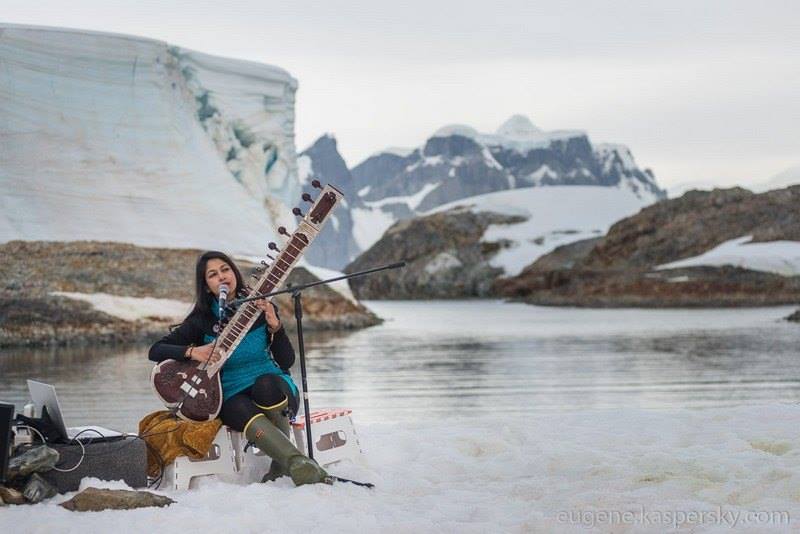
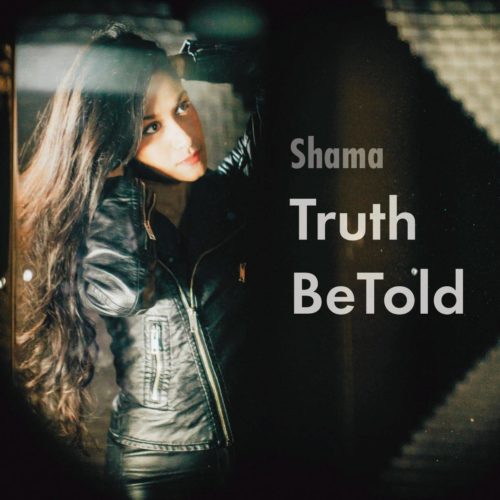
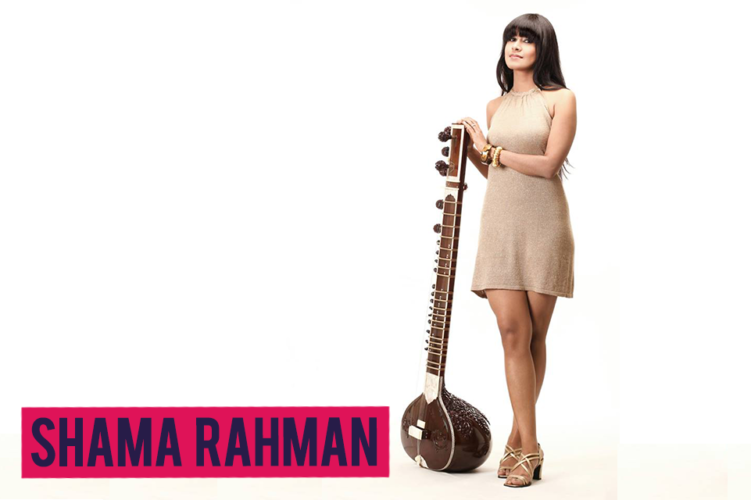
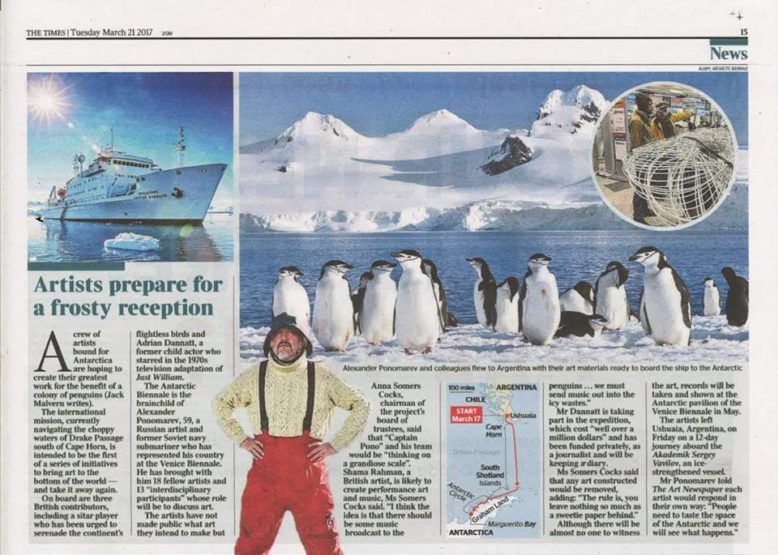 The Times, 21st March 2017
The Times, 21st March 2017